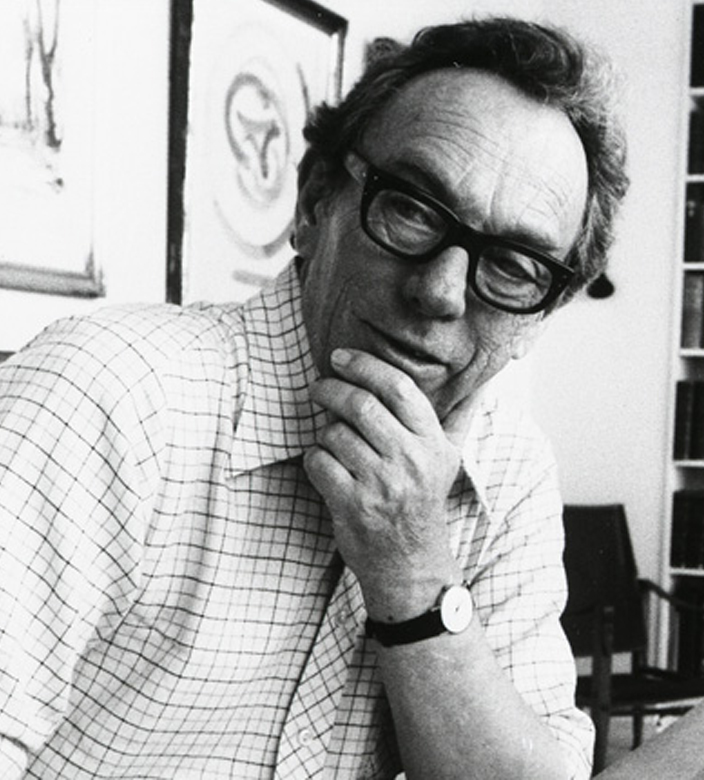Koppel Henning

Koppel Henning
Born in a wealthy Jewish family, Henning Koppel showed early on a talent for drawing and trained both drawing and aquarelle with Bizzie Hoyer. He continued in sculpture with Anker Hoffmann at the Royal Danish Academy of fine arts and later at the Academie Rancon in Paris. His superb drafting skills, developed as a child, helped him all along his career to produce outstanding product renderings of his designs. They on there own form an exceptional body of work. Like other Danish Jews he fled to Sweden during the Second World War. In Sweden he worked for Svensk Ten were he developed his skills in cast metals, and in glass with Orrefors. He was 27 when he came back and although his education was neither in design nor in jewelry he joined Georg Jensen as a designer for jewelry, hollowware and cutlery (most well known patterns: New York and Caravel). From the start his work in jewelry, hollowware and flatware was very organic and inspired by Calder, Arp and Brancusi.
Many of his best known works were first modeled in clay, which shows in the sculptural quality of his work. His love for sensual forms was not limited to products and sometimes linked to his reputation as a womanizer. Supported by a generous father he never understood well the relationship the modern movement made between function, affordability and production friendly design. He was always openly critical toward functionalism and unmoved by those critics who encouraged him to design more affordable products. “Functionalism has nothing to do with the art of forming silver” was one of his favorite expressions. Of his most famous piece, the silver pitcher for Georg Jensen of 1952 , only 500 were produced, a for Koppel exceptional high number. His designs for Torben Orskov, a pitcher, tumblers and bowls in melamine are an exception on his reluctance to make affordable products.
Koppel also designed for Bang & Grondahl (Form 24, better known under the name Koppel White), ceramics for Saxbo, lighting and clocks for Louis Poulsen, Glass for Kastrup and the Swedish Orrefors. Kvetny & Sonner produced his furniture.
He won the Lunning Prize in 1953, Gold medals at the Milan Triennale in 1951, 1954 and 1957 and the International Design Award of the American Institute of Interior Designers in 1963.
His daughter Nina Koppel, who only survived him by 8 years, was a well known textile designer.

